introduction and general information
Swathed in ancient history and unusual beauty, Ethiopia is an absorbing country to visit. From hot desolate depressions to bubbling volcanoes, misty mountain parks and some of the oldest Christian churches in the world, the landscape is mesmerising and soulful. The country is most frequented for its astounding rock-hewn churches, chiselled out of the rock face and seemingly perched in the sky. The holy and ancient region of Tigray is generally accepted as the birthplace of Christianity as well as the believed location of the sacred Covenant of the Ark where visitors can delve into the life of the Queen of Sheba and other age-old history. The Amhara area is home to the famous Blue Nile Falls, the spectacular Simien National Park, the churches of Lalibela, and the historic walled town of Harar where hyenas have been roaming the streets for over 500 years. North-eastern Ethiopia lies in the Danakil Depression, one of the lowest areas on the planet, where salty lakes, bubbling sulphur pools and bizarre pillars of salt will take your breath away. Those with an interest in culture shouldn't miss the dramatic and scenic Omo Valley where some of Africa's most decorated and interesting tribes still reside and where picturesque coffee plantations line the mountain slopes. The Rift Valley region that cuts straight through the country is where the majority of Ethiopia's wildlife can be found and is dotted with national parks, lakes and villages. The capital of Ethiopia is Addis Ababa, the point where most travellers begin their explorations, although few choose to linger here for longer than a day. Much of Ethiopia is remote and unmodernised so travellers are advised to keep cash handy and expect connectivity with the outside world to be slow. A guided itinerary is strongly recommended as public transport is challenging. We are able to help you with all the necessary tour arrangements.
our top 5
Lalibela
Set amongst an awe-inspiring highland landscape, Lalibela is a small rural village that is home to some of the finest rock-hewn churches in the world. The area is an important pilgrimage site for Coptic Christians and consists of a series of monolithic, medieval churches dating back to the 13th century. Their construction is attributed to King Lalibela who set out to build a ‘New Jerusalem' after Muslim conquests halted Christian pilgrimages to the holy land. Incredibly chiselled from living rock, the churches consist of doors, windows, columns, floors and roofs, further completed with an extensive system of drainage ditches, trenches and ceremonial passages, making visitors feel as if they have stepped back into an ancient time. Lalibela is simply spellbinding with all 11 churches representing a unique artistic achievement. Highlights not to be missed include Biete Medhani Alem, believed to be the largest monolithic church in the world, and Biete Ghiorgis with a remarkable cruciform plan. Alternatives to exploring on foot include a mule trek, as some of the climbs to the churches are steep, or booking a full day guided trek that will also put you in close proximity to the endemic flora and wildlife of this mountainous region. The scenery along the road from Gondor to Lalibela is pretty and worth a stop or two while on your guided tour of Ethiopia.
Suggested length of stay: It is quite possible to see all 11 of Lalibela's churches in one day and, once there, visitors can roam the sites on foot. This location should be included in every Ethiopian travel itinerary and Boutique Africa can assist in co-ordinating your travel route and timeline.
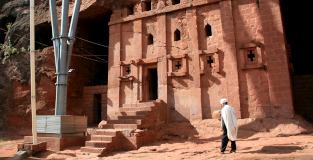
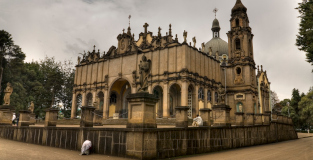 Add to Favourites
Add to Favourites
Simien Mountains
The magical Simien Mountains are an Ethiopian highlight offering incredible hiking and wildlife opportunities. The area is home to one of Ethiopia's first established national parks with gentle paths and stunning views that take you progressively higher up the mountain towards a spectacular waterfall lookout. As a UNESCO World Heritage site, the park is one of the best locations in the country to spot the endemic gelada monkey, while the cool climate evokes a mystical and peaceful atmosphere. The massif is located on the northern limit of the main Ethiopian plateau and is considered one of Africa's most beautiful mountain ranges. Often compared to Colorado's Grand Canyon, its pinnacles reach heights of 1 500 m while sheer cliff walls stretch for dozens of kilometres and offer superb views of the plains far below. The park is of global significance for biodiversity conservation as it is home to internationally threatened species including the walia ibex, a wild mountain goat found nowhere else in the world, and the Ethiopian wolf, considered to be the rarest canid species in the world. Other large mammals include klipspringer and golden jackal as well as over 130 varieties of birds. The Simien National Park also features a giant Erica forest and Ras Dejen (or Ras Dashen), the highest mountain in Ethiopia, standing at 4 533 metres. We recommend a guided tour through this magnificent landscape.
Suggested length of stay: The park is ideal for a day trip, relatively close to Gondor, and easy to include in a broader itinerary. Those wanting to take full advantage of the hiking trails may consider spending a night or two at a camp site or community lodge within the park. Speak to Boutique Africa about booking accommodation, transport and guides as well as ensuring you have all the necessary equipment.
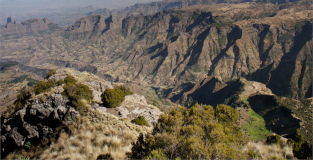
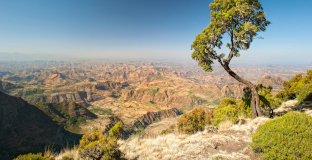 Add to Favourites
Add to Favourites
Bahar Dar and Blue Nile source
Bahar Dar is the commercial centre of Ethiopia's north western Amhara region. Although busy, its lake setting gives it a lovely laid back feel with palm-lined streets and a pleasant holiday atmosphere. The climate is balmy and the city offers a good selection of restaurants, markets and other amenities such as banks and pharmacies. Visitors can also delve into some history by exploring the lush Zeghe peninsula. We suggest a boat cruise on Lake Tana, Ethiopia's largest inland body of water and the source of the Blue Nile, dotted with islands, churches, and monasteries of significant historical and cultural importance. Many of the earliest manuscripts and precious examples of ecclesiastical art as well as royal objects are safely stored in their treasuries while the lake is alive with bird life, hippos, and local fishermen passing by in traditional papyrus boats. We also suggest a traditional dinner show at one of the city's cultural restaurants, where local delicacies are accompanied by traditional singing and dancing. Less than an hour from the Bahar Dar is the Blue Nile Falls, beautiful, appearing out of nowhere, and with not a touch of commercialism in sight. A guide and 4x vehicle is required to access the falls and we recommend comfortable walking shoes.
Suggested length of stay: 2 nights is just sufficient to enjoy Bahar Dar and the Blue Nile, although some may wish to extend this. There are daily flights to and from Addis Ababa and the city is a refreshing stop over as part of a larger Ethiopian travel itinerary. Visitors should bear in mind that Ethiopia can be confusing to navigate and we strongly suggest following a planned, guided itinerary. Experts at Boutique Africa can assist you in making the most of your time in this fascinating country.
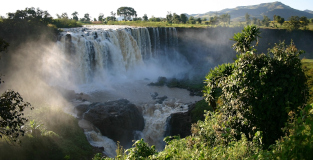
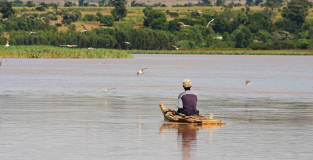 Add to Favourites
Add to Favourites
Omo Valley
Located in the south of Ethiopia, the remote Omo Valley is an incredible part of the country and an epicentre of ethnic, tribal and cultural diversity. Seemingly forgotten by the rest of the world, here ancestral values such as pride and honour are strongly nurtured and, for most visitors to the region, this is exactly the motivation for their trip – to gain a glimpse of the indigenous communities that still inhabit this desolate region. There are over 16 different cultural groups in the Omo Valley who still closely following the traditional lives of their ancestors amidst a harsh, arid and scorching environment where survival is far from easy. Some of the largest and most visited ethnicities include: the Hamer, easily identified by the women's braided hair stained with red clay and known for their traditional bull jumping ceremony; the Karo, renowned for their incredible body paint work; the Dasanech, who live on the banks of the Omo River in round homes that can be collapsed and reassembled in less than a few hours; and the Borana, with the remarkable ability of sourcing scarce water from hand dug wells. The best time to visit this region is between January and April when the weather is dry and many traditional ceremonies take place. Be warned though, it gets very hot in this region of Ethiopia. The area is best explored with a guide or part of a tour group.
Suggested length of stay: Given the amount to see here, and taking into account travelling distance and the added heat factor, we suggest 4 or 5 days exploring the Omo Valley. Boutique Africa can tailor a tour package to suit your needs that includes other attractions such as visits to the markets, singing well, nearby Mago National Park and the amazing El Sod crater lake.
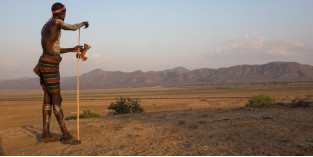
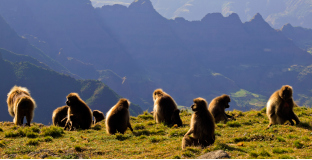 Add to Favourites
Add to Favourites
Axoum
Ancient history, much of which may still lie waiting to be discovered, is what draws most visitors to Axoum, one of the oldest continuously inhabited places in Africa. Located in the Tigray region of northern Ethiopia, Axoum is best known for its tall, carved obelisks and ancient churches, one of which is believed to safeguard the biblical Ark of the Covenant. Due to its immense historic wealth, it has been declared a UNESCO World Heritage site, and thought of by some as the last of the great civilisations of antiquity to be revealed to modern knowledge. Although tiny, the area has much to offer in terms of historical interest and is easily explored on foot. Popular highlights include the St Mary of Zion Church Complex, the most important church in Ethiopia and meant to be home to the Ark of the Covenant; the Northern Stelae Field just across from the church; Cleopatra's Bath; the Kaleb and Gebre Meskel Tombs; the Yeha Temple, the oldest structure in Ethiopia; and various magnificent churches. As with the rest of Ethiopia, we suggest exploring the area as part of a guided itinerary. Many of the attractions are in close proximity to each other although a few such as Debre Damo monastery and the Yeha temple are a bit further afield. Visitors should also note that according to religious belief, a few of the churches only permit men to enter while some require a bit of rock climbing to reach.
Suggested length of stay: We suggest 2-3 nights in Axoum as part of an Ethiopian travel itinerary. Boutique Africa can assist with planning your route, guide, transport and accommodation.
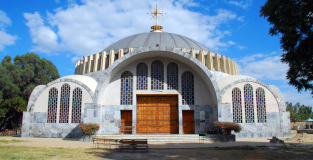
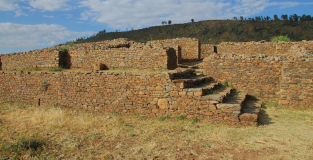 Add to Favourites
Add to Favourites
